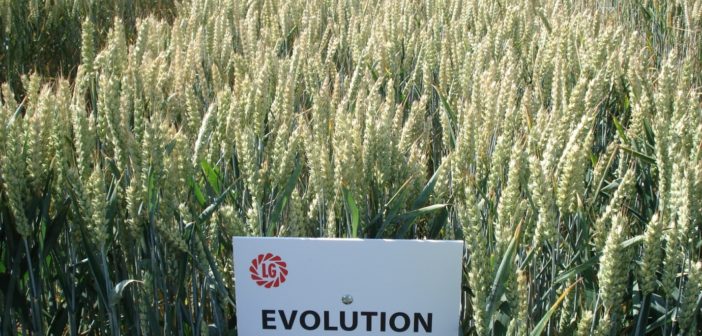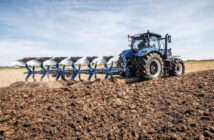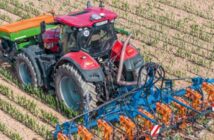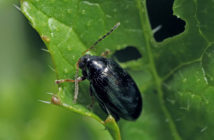With over 41 winter wheat varieties on the AHDB Recommended List 2017- 2018, how will growers choose the right varieties for their farms?
It’s important to look behind the headline yield figures and fully understand the robustness and consistency of the data to ensure on-farm performance, urges Ron Granger, arable technical manager with Limagrain UK.
It’s the consistency of a varieties performance over differing seasons that is key, and one that he encourages growers to understand better, rather than just going for the top-line yield.
“It’s all about choosing the genetics that will support your given farm situation and chosen market.”
“Generally, we are seeing a swing towards more robust disease resistant varieties as they catch up with the yield lag that was once associated with these varieties. However, the ability of wheat varieties to withstand disease pressure can be very varied, with some genetics holding up well whilst other varieties succumb to the evolving race changes and more intense pressure.”
“By looking at the five year average yield results on the AHDB Recommended List, it is possible to see how a particular variety has performed over the last five seasons.”
“This is more important than the performance for a single season, especially as we would appear to be in cycles of erratic weather patterns (for example 2012, 2014 & 2016) that all resulted in very high disease pressure seasons, continues Mr Granger.
“Regarding Group 1 milling wheats, it’s always better to grow a safe and consistent variety that has performed on farm and produced the desirable grain specifications, rather than rush into an unproven variety on the promise of an extra 1-2% yield.”
“Whilst we don’t yet have the figures in for this year’s more catchy harvest, it’s clear to see by looking at the trends that certain varieties are more consistent than others. “
NIAB’s Clare Leaman, agrees that there is value in being able to look at the performance of a variety over several seasons. “Consistency is considered to be a more valuable trait now than it has been for a long time, and is certainly much higher on the agenda when choosing what varieties to grow.”
“This has come about as seasons have become increasingly unpredictable and varied and growers want the reassurance that they are going to get the yields, or close enough to the yields that they anticipated when they put the crop into the ground.”
Mr Granger believes that there is a danger with the RL that growers jump to the newest high yielding varieties on the back of a limited amount of data and inevitably there will be some blips where a variety does particularly well one year.
He points out that with the dry weather we have had this spring, varieties have not been as challenged by yellow rust or septoria, although brown rust has been an issue later in the season. It’s important not to be lulled into a false sense of security and to recognise this when deciding what to grow for next year, when we may not be so lucky.
Consistent Crusoe
Despite being on the AHDB RL for over six years, the Group 1 milling wheat Crusoe still remains a market favourite based on its consistent high protein content, giving growers the security for hitting contract specifications.
“It is this consistency of good protein content and quality that has seen millers using increasing volumes since its launch,” says Mr Granger.
“Although Crusoe would appear to be a lower yielding variety on the AHDB RL than some of the newer Group 1 wheats, the story on farm seems to be very different, with the variety performing very well producing exceptional high yields and hitting grain specification.”
“This is reflected in the fact that despite Crusoe being a milling wheat, the variety is successfully being grown as feed wheat in regions of high disease pressure indicating that security of on farm performance is critical for growers today in a very volatile market.”
Crusoe also offers short stiff straw, an important attribute for a milling wheat when, as we have seen this season severe weather has had an effect on lodging pressure among many varieties both in trials and on farm.
Crusoe continues to offer robust disease resistance ratings with a good 6.7 for septoria, a 6 for fusarium ear blight, a 9 for yellow rust and a 7 for mildew.
“These ratings continue to hold up when newer quality varieties are showing higher levels of disease susceptibility this season. Growers are aware of Crusoe’s lower rating for brown rust and as long as this is managed appropriately with fungicides, should not be a problem.”
High yielding feed wheat
If looking for a hard feed wheat variety that offers high yields that has proven itself across different seasons and in a range of situations, Evolution remains a safe choice. The variety has shown a consistency of performance alongside market stalwarts, JB Diego and Santiago, and is still a firm favourite on farm.
“This variety has performed well in a first wheat situation, but its performance as second wheat has been exceptional and is probably the main placement on farm today”, says Mr Granger.
“In fact, Evolution performs better in a second wheat slot than first wheat. As first wheat it yields 102% on the RL, but move it into a second wheat slot and its performance jumps up to 103%.”
The variety also suits the later drilling scenario, producing very high yields which suggest its good performance in a blackgrass situation.
Bred by Danish breeder Sejet, the combination of the political climate, tight regulations around crop inputs in Denmark and the tendency for early generation selection of varieties in a second wheat situation, tend to produce wheats with a greater root mass to improve nutrient-use efficiency, he claims.
“The variety, unlike its rivals has held up very well regarding disease resistance and again this season has shown good disease resistance when new varieties are showing higher levels of susceptibility.”
“The reality is that we don’t know what the next season is going to throw at us, there are so many unknowns in this game – grain prices, weather patterns, disease pressure and even the impact of Brexit, so start by minimising risk wherever possible- and one of these areas is choosing the right wheat variety by looking behind the yield headlines, at the on farm security and marketing options that the variety offers.”




